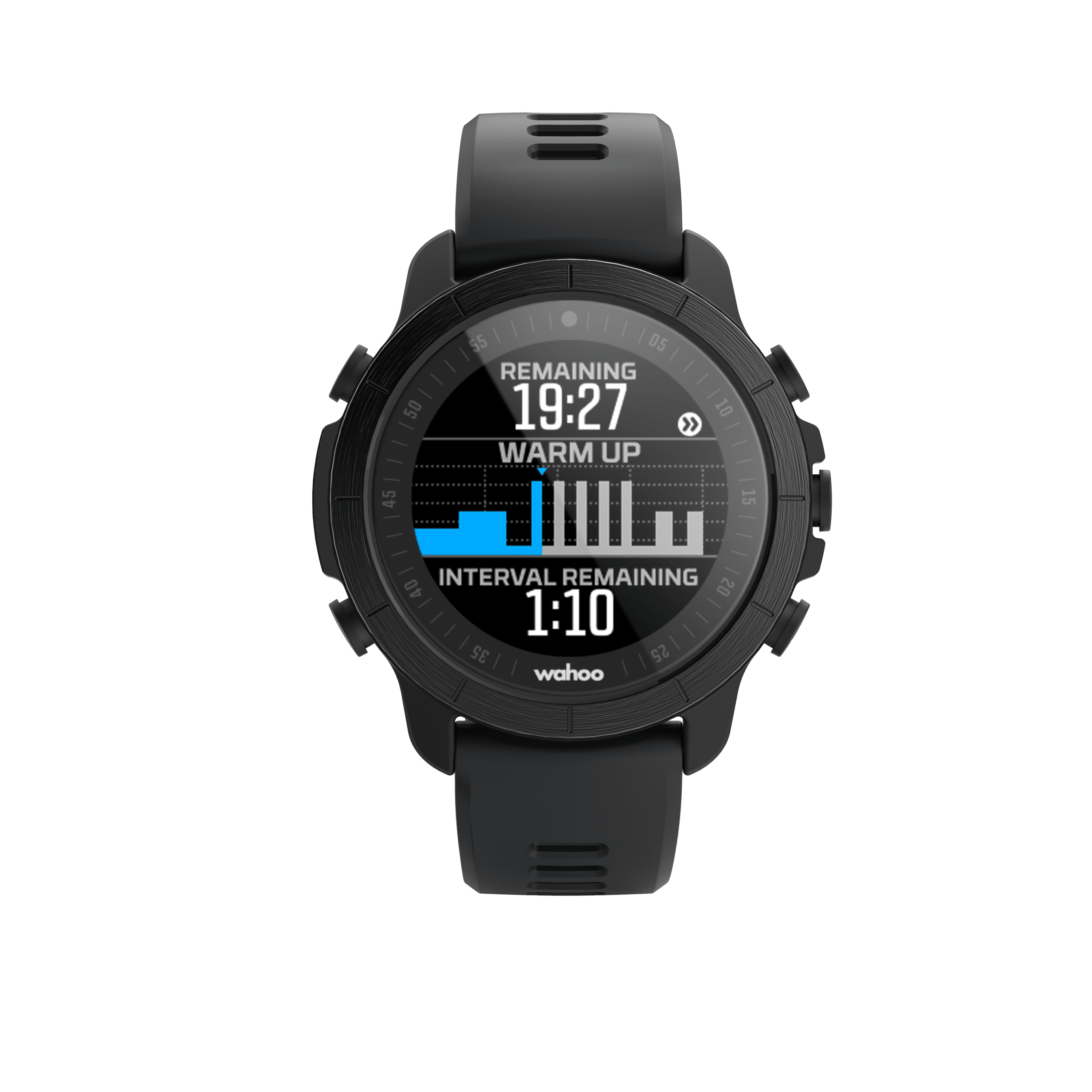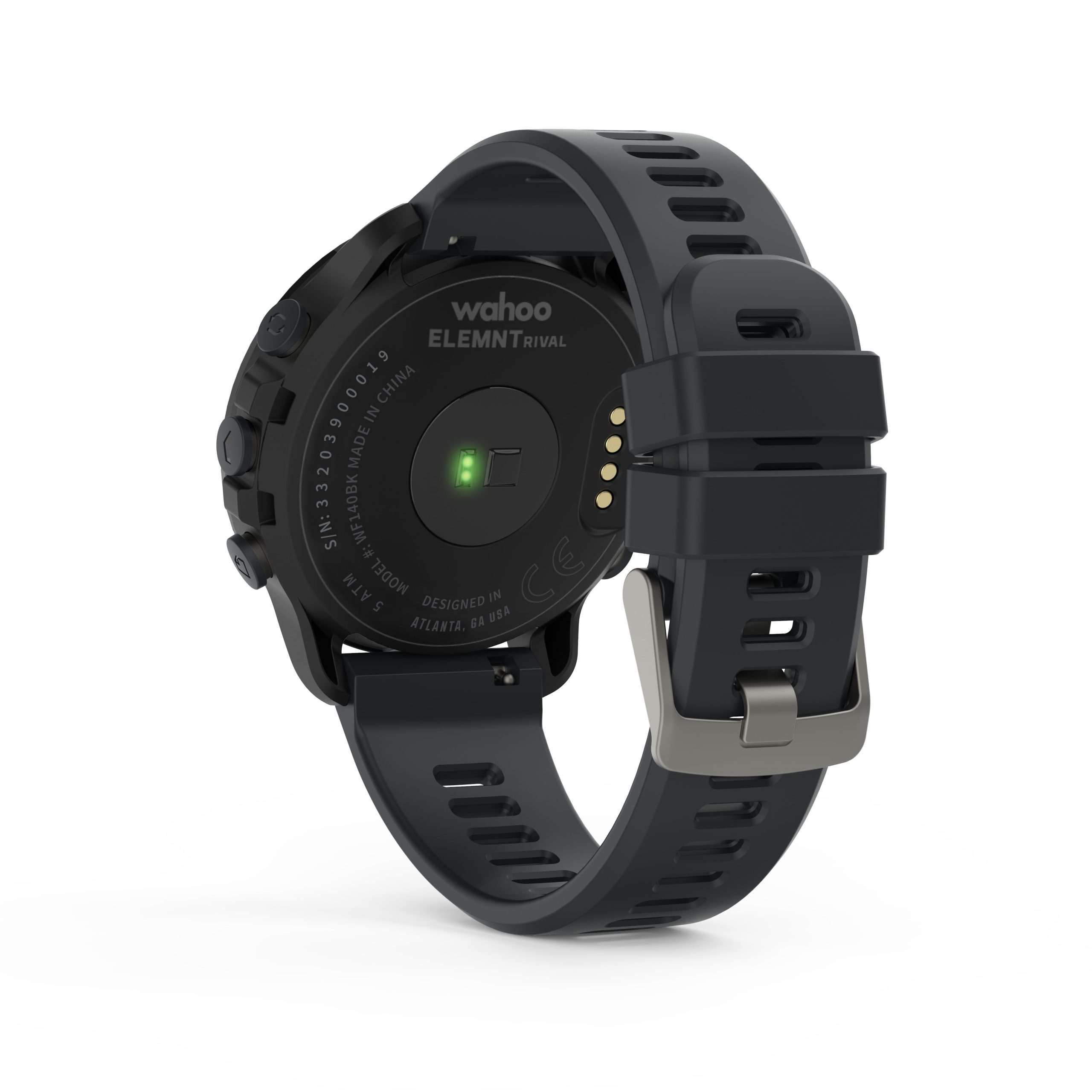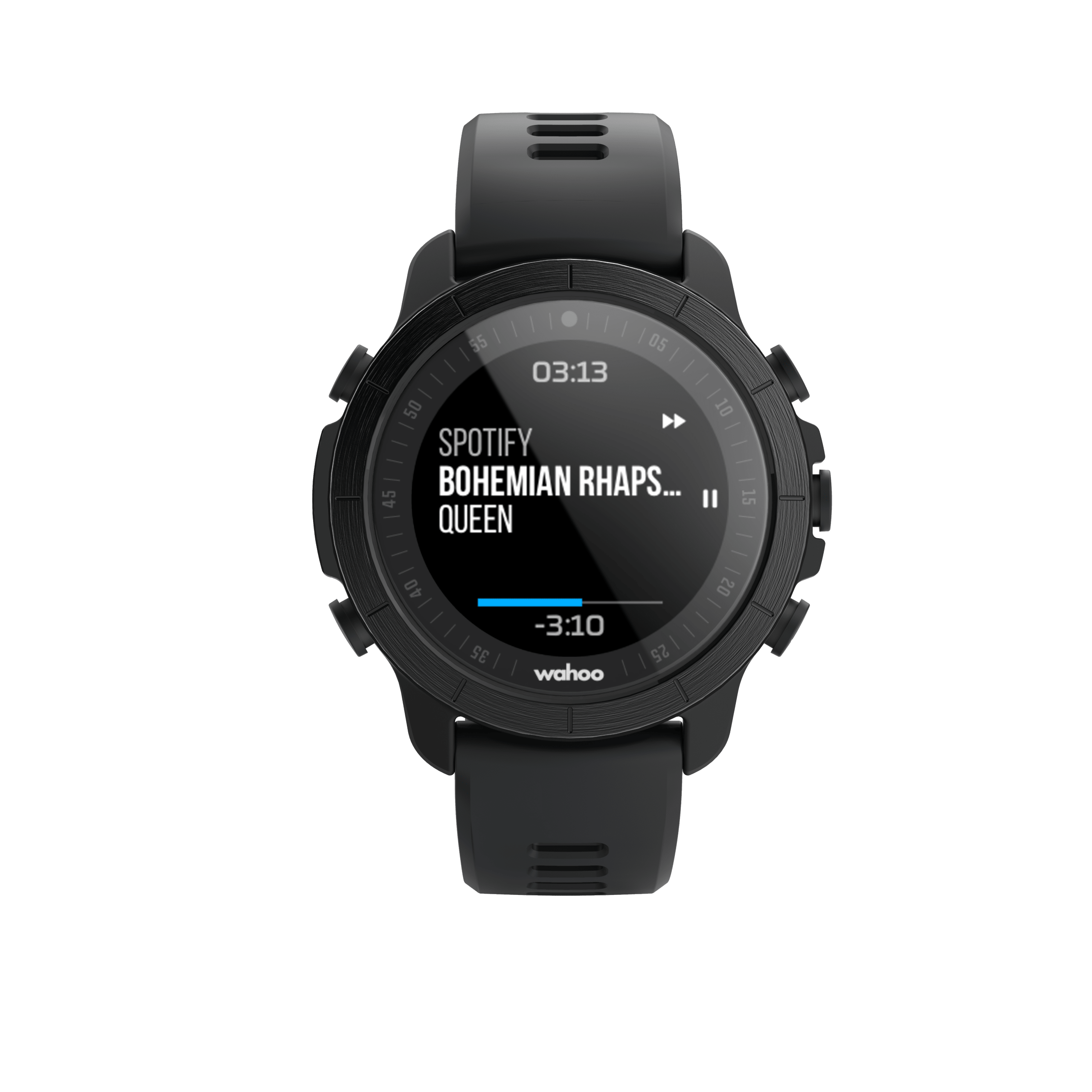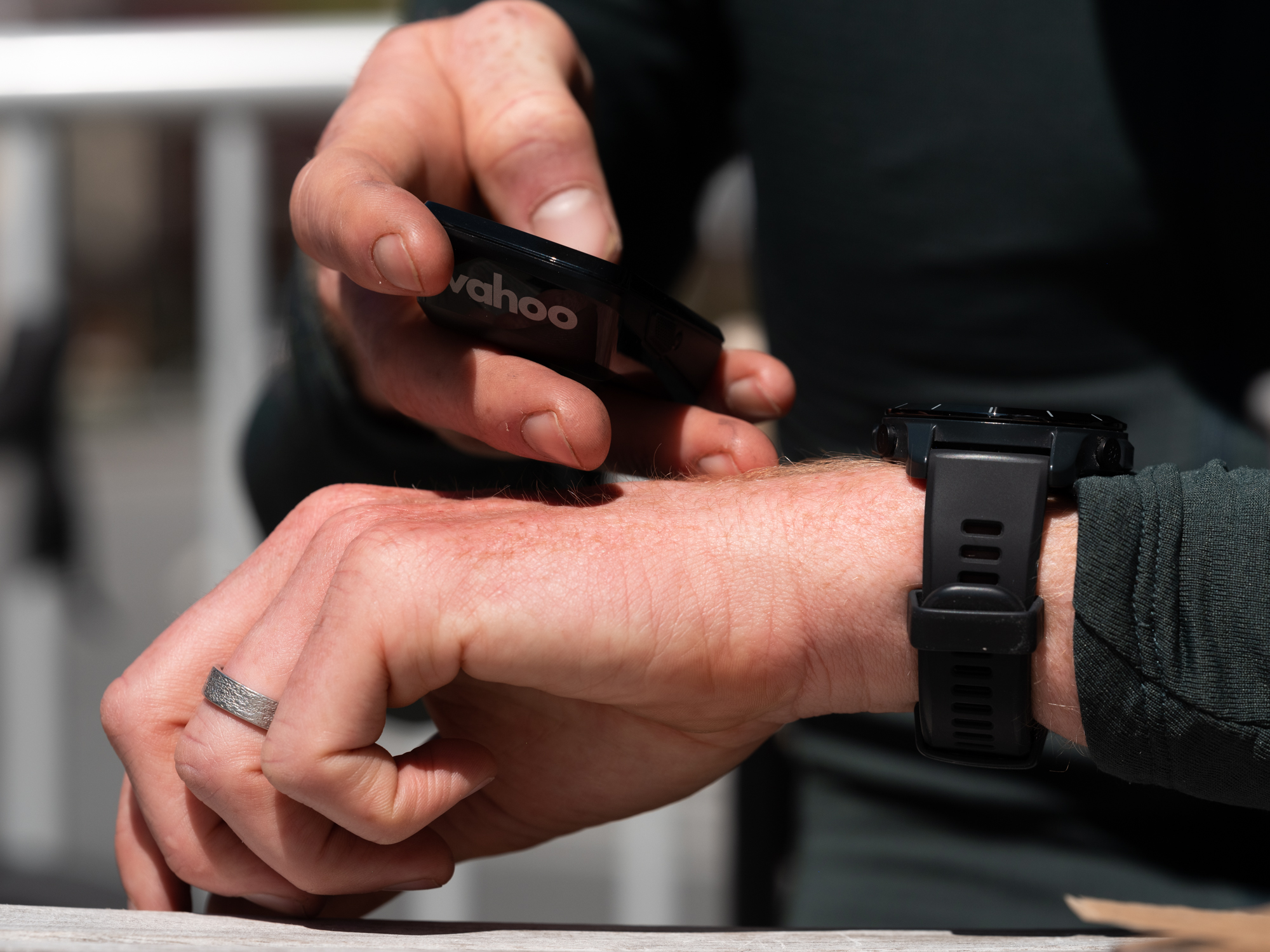RRP: $699
Distributor: FE Sports
Words: Liam Friary
Wahoo has built a solid reputation over the years. I’ve found that their Elemnt computers just work – they are reliable and easy to live with. There’s little drama when pairing them to devices and they push across to any service you desire. Naturally, when Wahoo Elemnt Rival was offered for testing, I was the first to raise my hand. This is the first smart watch offering from the American brand – they’re bringing their head units to your wrist.
It packs loads of tech features so let’s take a quick look: The watch is 46.5 x 46.5 x 15.3mm in size and the 30.4mm colour screen has a 240x240px resolution. The bezel is made from ceramic, while the rest of the case body is made from a nylon polymer, keeping the watch lightweight. The screen isn’t a touch screen – so it doesn’t swipe, pinch, tap or whatever else you might do with touch screen – but, you don’t want a cycling smartwatch with a touch screen anyway. It’s ironic that in the current digital age, this smart watch still has analogue functions. But that’s where it starts and ends. The particle approach remains, with side buttons which work flawlessly in all conditions and even with sweaty/wet gloves. This beats some of the other smart watches with touch screens which are a nightmare to change in anything other than ideal conditions. The screen itself is uber-tough as it’s made from Gorilla Glass, and the strap is crafted from flexible silicon. It’s 21mm (pretty standard for a smart watch) and can be easily removed (tool free) or flipped out for something else (even non-Wahoo).



The Rival takes advantage of both GPS and GLONASS satellite networks and can connect to ANT+ and Bluetooth sensors. Bluetooth pairs to your smartphone and, what’s more, the Rival also sees ANT+ FE-C capability so that it can control most smart trainers, should you want to run a workout directly from the watch. It also tells the time – but I suppose you have guessed that already, as it does have ‘watch’ in the name. Being ‘smart’, it updates automatically with daylight savings and when you travel over time zones. It can also tell you how many steps you’ve taken and the calories you’ve burned in a day. So, it doesn’t tell you about sleep metrics or resting heart rate, but it still packs plenty of punch when used for performance, such as touchless transition and power meter support.
Onto the heart rate component – the Elemnt Rival uses two LED optical heartrate sensors located underneath the watch. There are arguments either way as to how best to track heartrate, either via chest strap or optical, and they both have their benefits and flaws. That’s probably a whole other article in itself so let’s try and keep it contained. Chest straps utilise electrodes pressed up against your skin, and electrocardiography to log your heart’s electrical activity. Optical heart rate has been around for many years in the medical field, with the finger clips that read heart rate through Photoplethysmography (PPG). By shining a low-intensity light through your skin, the sensor can read fluctuations in blood flow beneath the skin and determine your heart rate. I’ve used the chest strap for years and in recent times have completely done away with it. That’s down to me not going near many start lines. Quite frankly, I got over the chest straps with their restricted feeling and the pesky thing always slipping down. I measure efforts via power meter but that’s not to say heart rate doesn’t have its place – because it definitely does. And, when using the optical heart rate built into the Elemnt Rival, it’s been good to see the overall trend of my heart rate. Being on the wrist there’s the issue of the watch bouncing around somewhat – even if you tighten the strap up it can still shift about, making it harder to read your heart rate. I’ve found this on occasions when running on off-road trails and, not often but sometimes, when riding on rough terrain. Perhaps, if you’re solely training by heart rate, then a chest strap could be the solution with the Elemnt Rival then pairing to it as a handy addition. If you’re just looking for overall heart rate monitoring, then the optical solution could do the trick. I’ve liked it simply for the ease of use and have found using it more often has made me more in tune with my heart rate before, during and after workouts.

So, let’s talk about how it performs out in the field, road, trail or whatever you’re using it for. Firstly, if you own a Wahoo computer it will feel familiar. It’s all paired through your smartphone via the Elemnt App, which allows you to customize the screen, 24/7 data tracking, workout profiles and sensor pairing – you can even watch videos about how to get the most out of the watch. The touchless transition makes it ideal for multisport athletes and whilst I haven’t competed in that realm for yonks, this addition makes absolute sense. I did a little bike/run set to test it out – the touchless transitions worked superbly. It picked up my different movement without me doing anything and recorded the transition times. Wahoo has also used the zoom feature as they have on their other computers. Basically, this means you can adjust the number of data fields with the touch of a button – rather than pulling out your smart phone. Over the past few months, I’ve been logging miles throughout our bleaker months which has meant many rides/runs either starting in the dark or ending in it. The Elemnt Rival has excelled with the light, as it uses an ambient light sensor which meant I could see the screen at a glance without having to hit any buttons. You can even lock the screen if you’re taking off a layer, for instance. The battery life is superb, and I went for at least five days before charging it – that was working out every day. The GPS signal picks up swiftly too – no more standing around waiting for the signal.
I’ve enjoyed using this smart watch for everyday and workout use. It’s been robust and hassle free for the test period. I like that it’s not overly complicated and is somewhat stripped back – just doing what a watch should. It comes with handy smart features and pairs seamlessly to your other devices. The optical heart rate can come and go but overall, it’s been fairly good to see my heart rate over the course of a workout. This is a great choice for any multi-sport athlete as the transition function is second to none and while it’s not fully down the multi-sport cave, but close, it’s been a great addition for tracking my trail running. The Elemnt Rival has been ideal for rides indoors and out, and I’ve liked seeing what the heart rate is doing as well as my overall calorie burn. It’s also easy to wear and unobtrusive when on the bike. It’s robust and didn’t faulter once which is what I’ve come to respect the most about Wahoo. It’s the watch I never knew I needed but now can’t live without.


